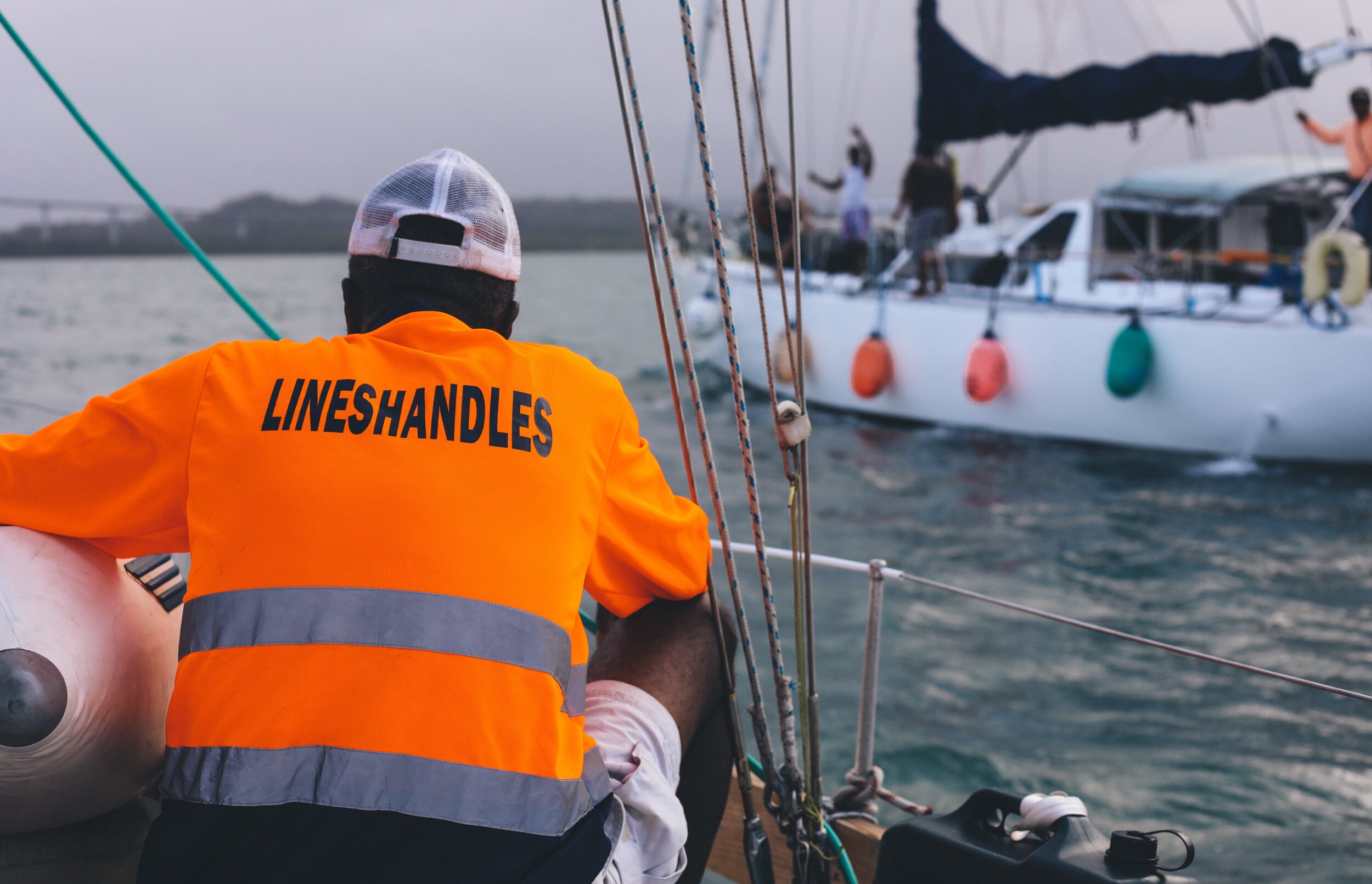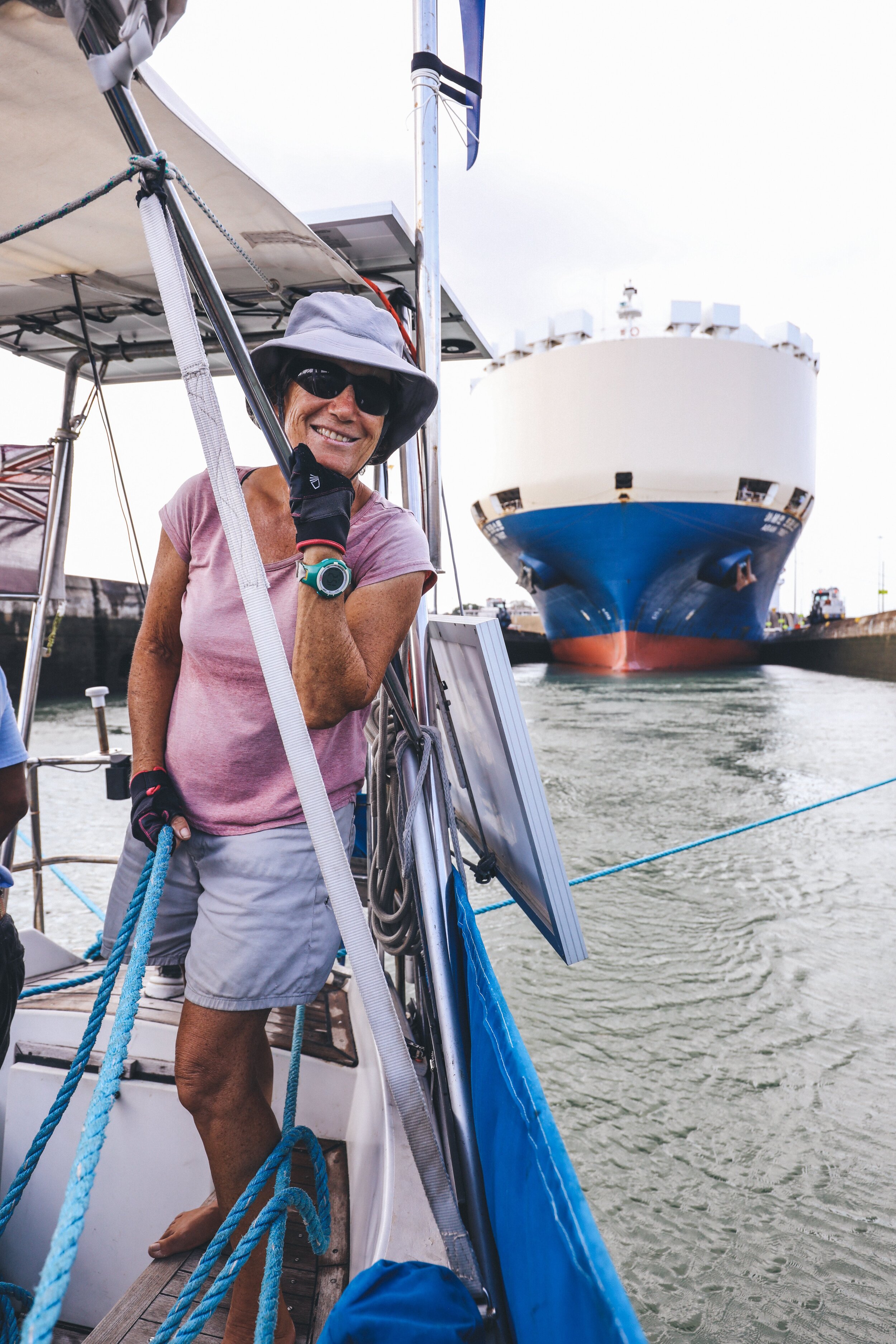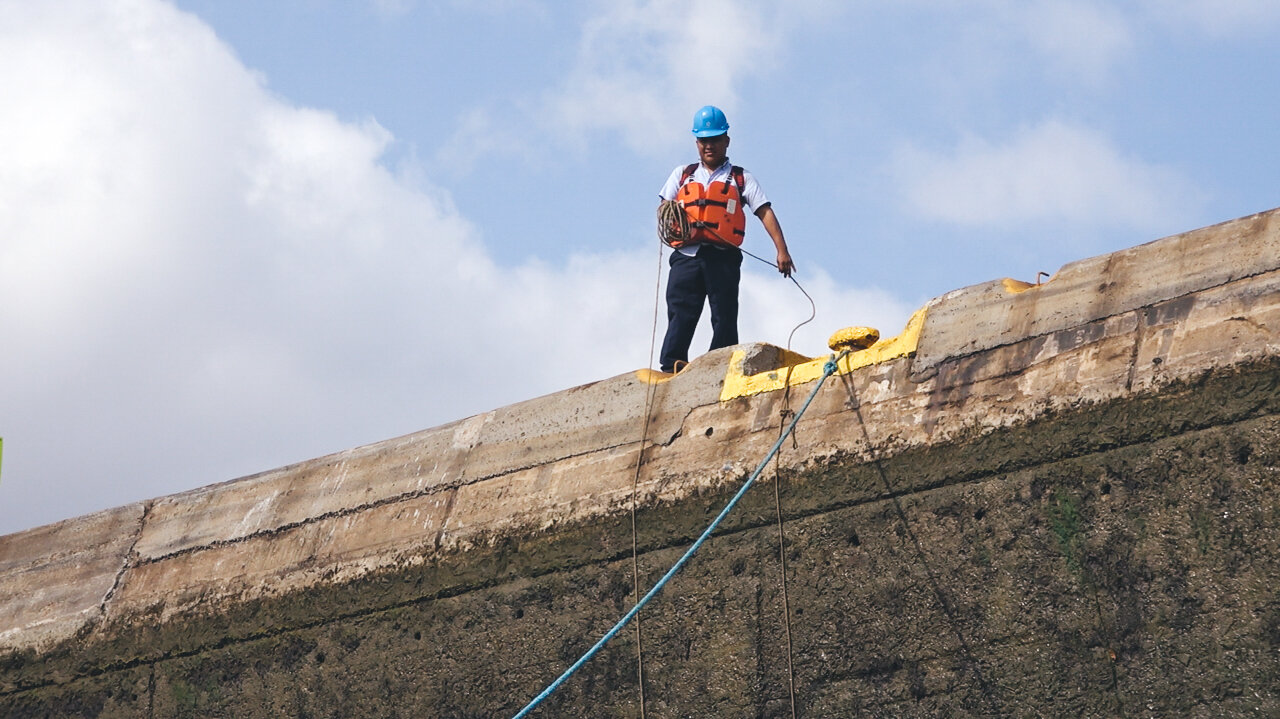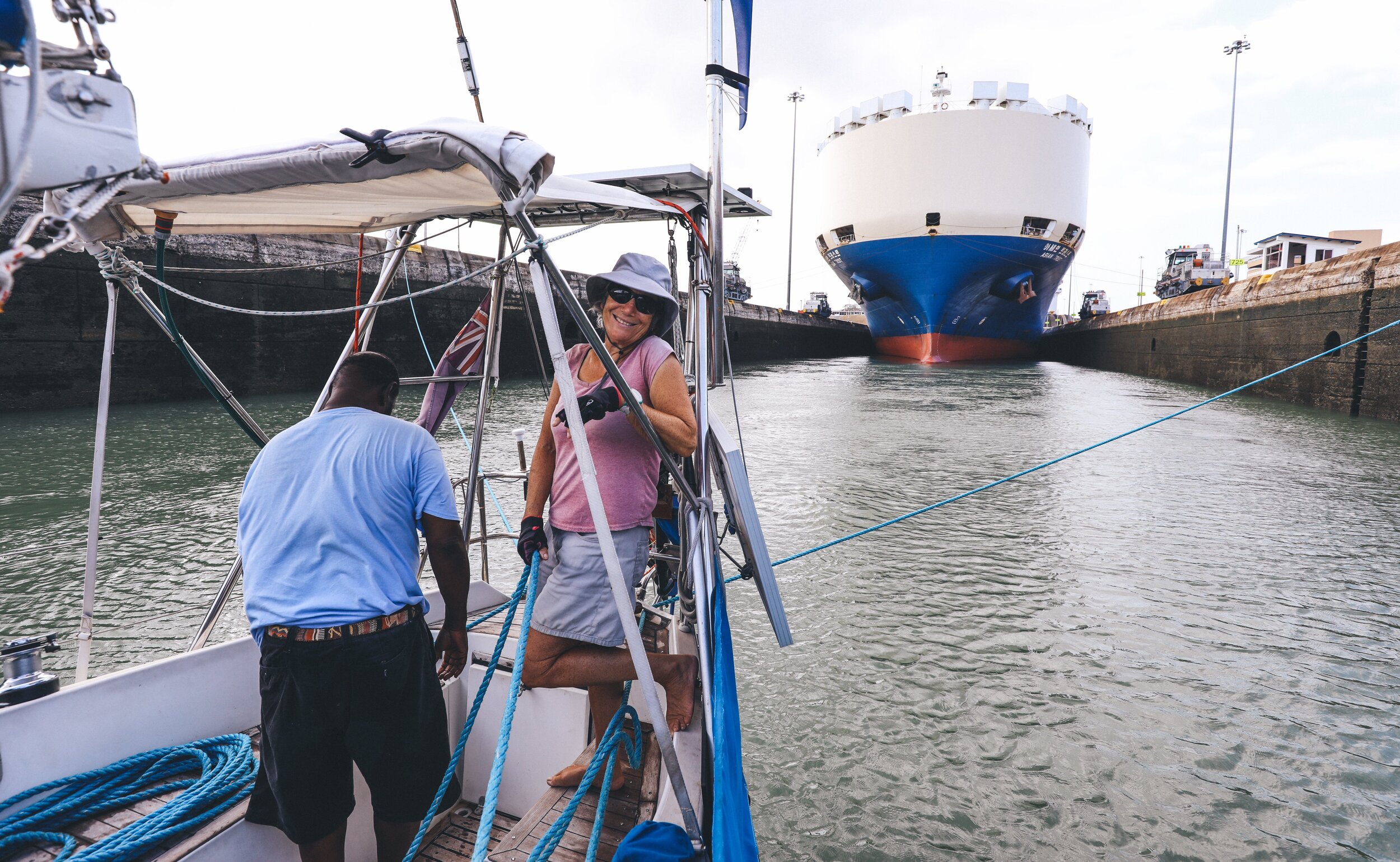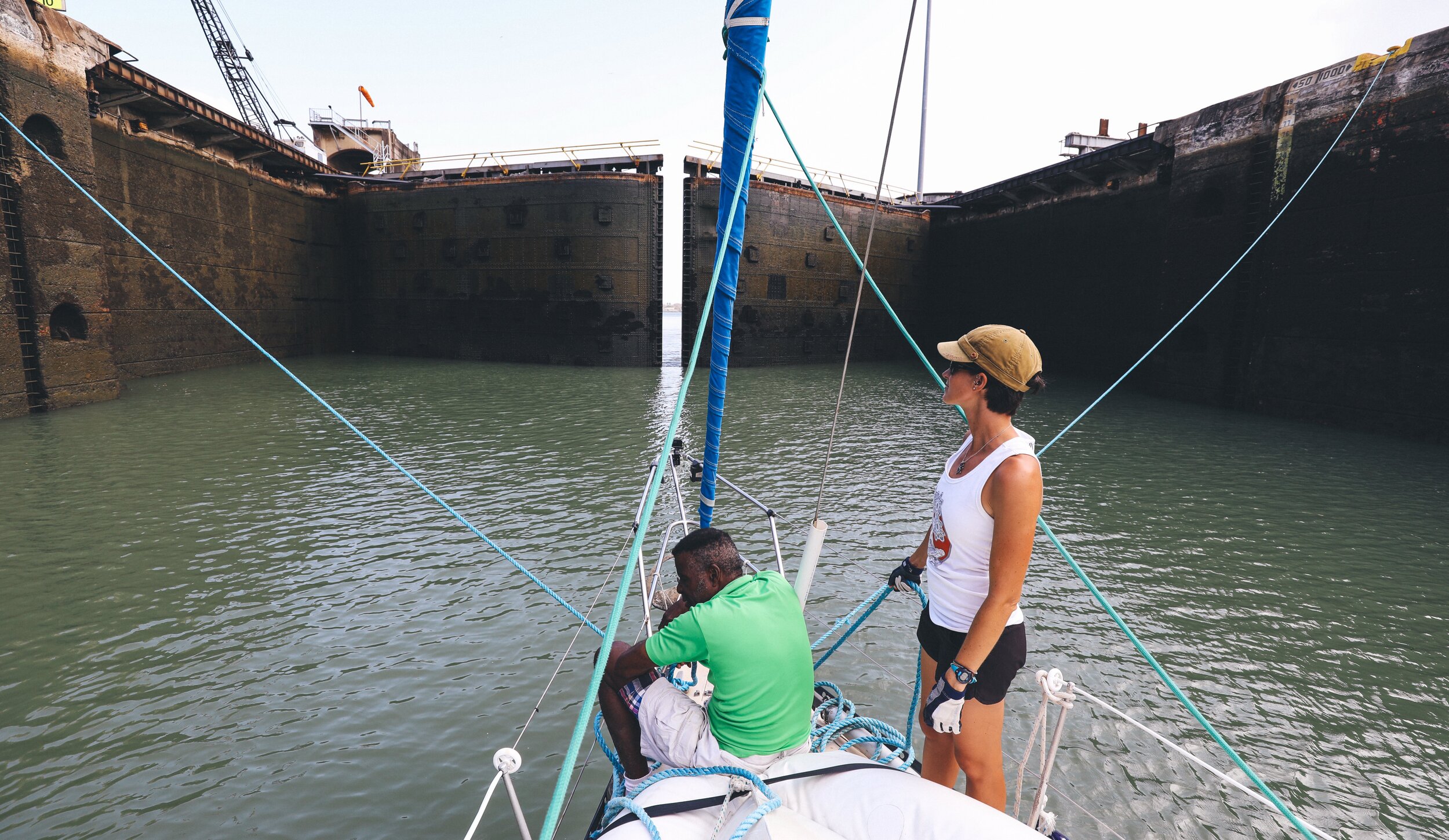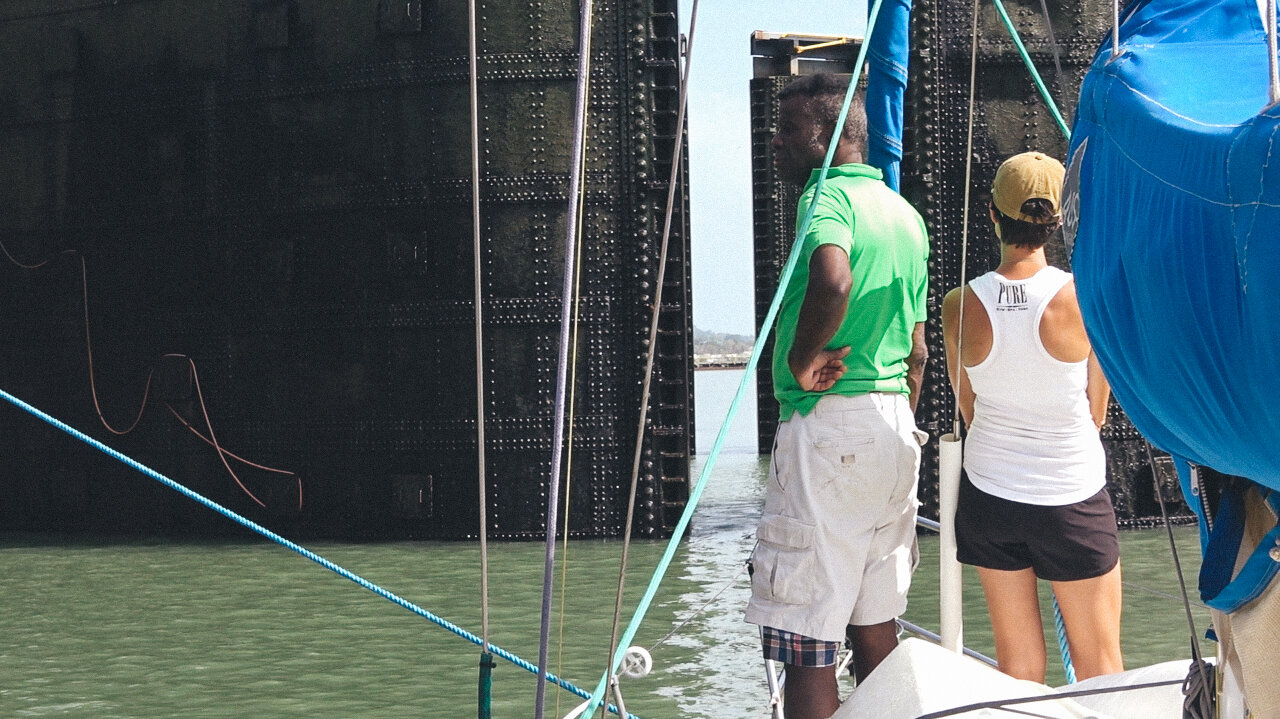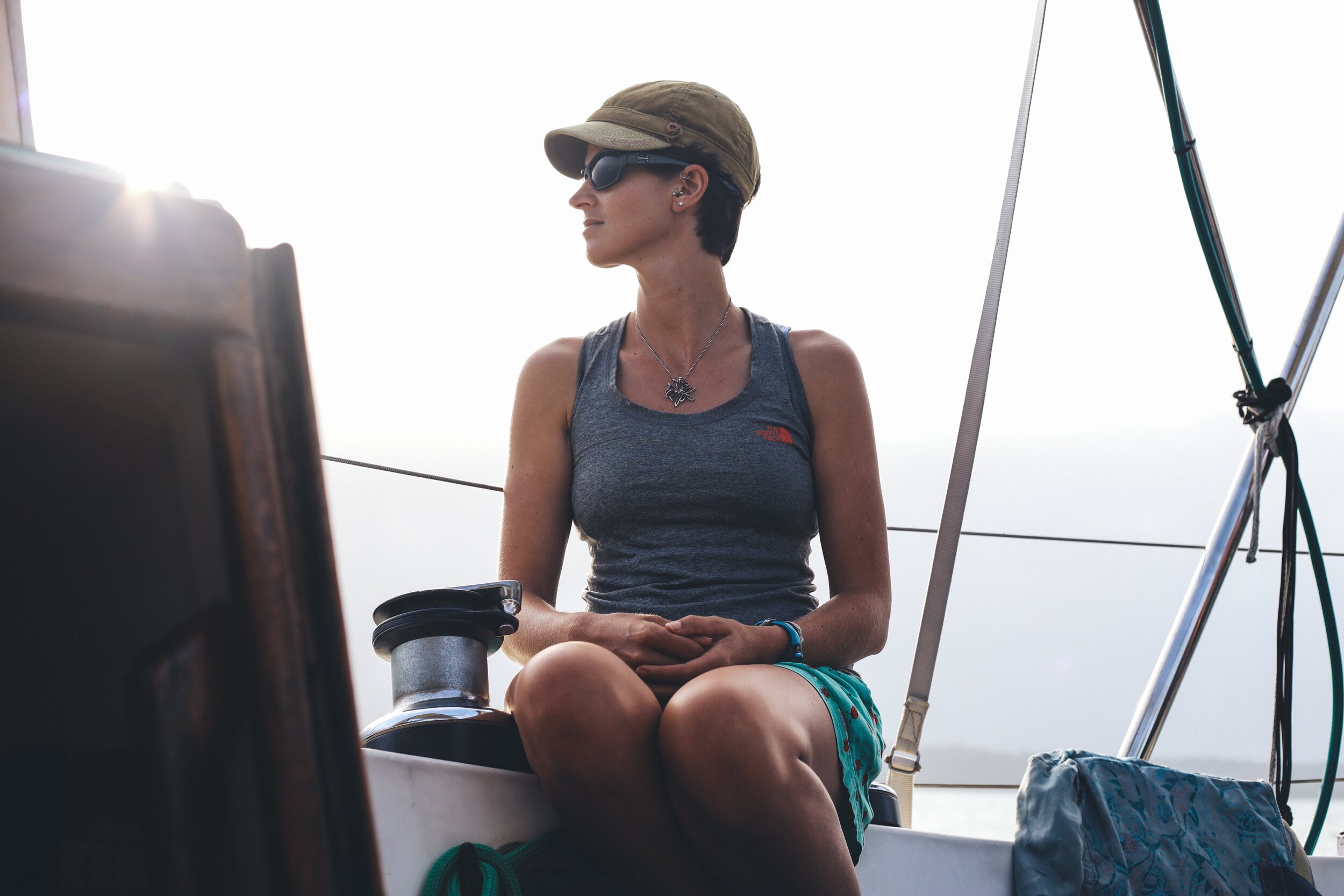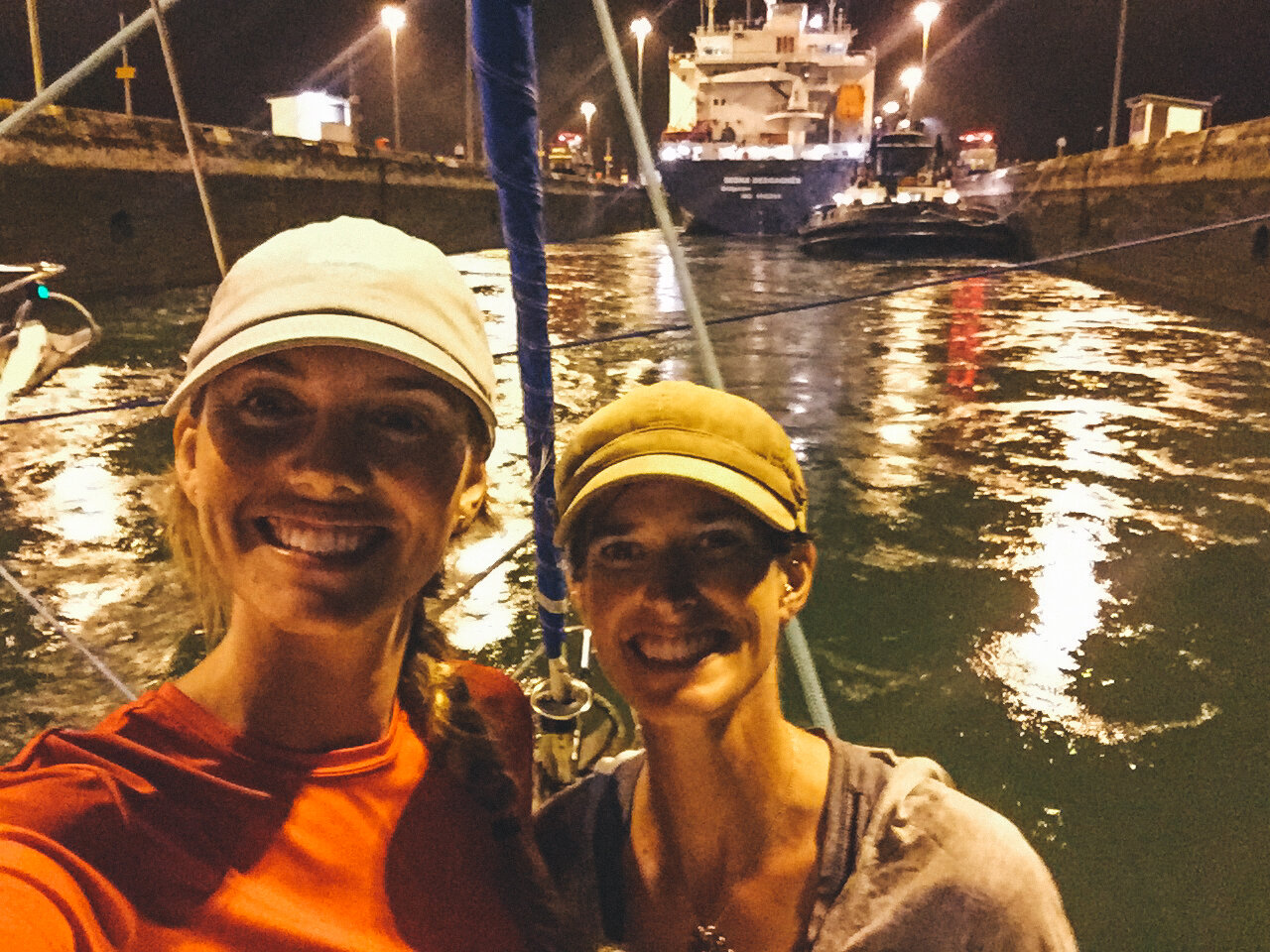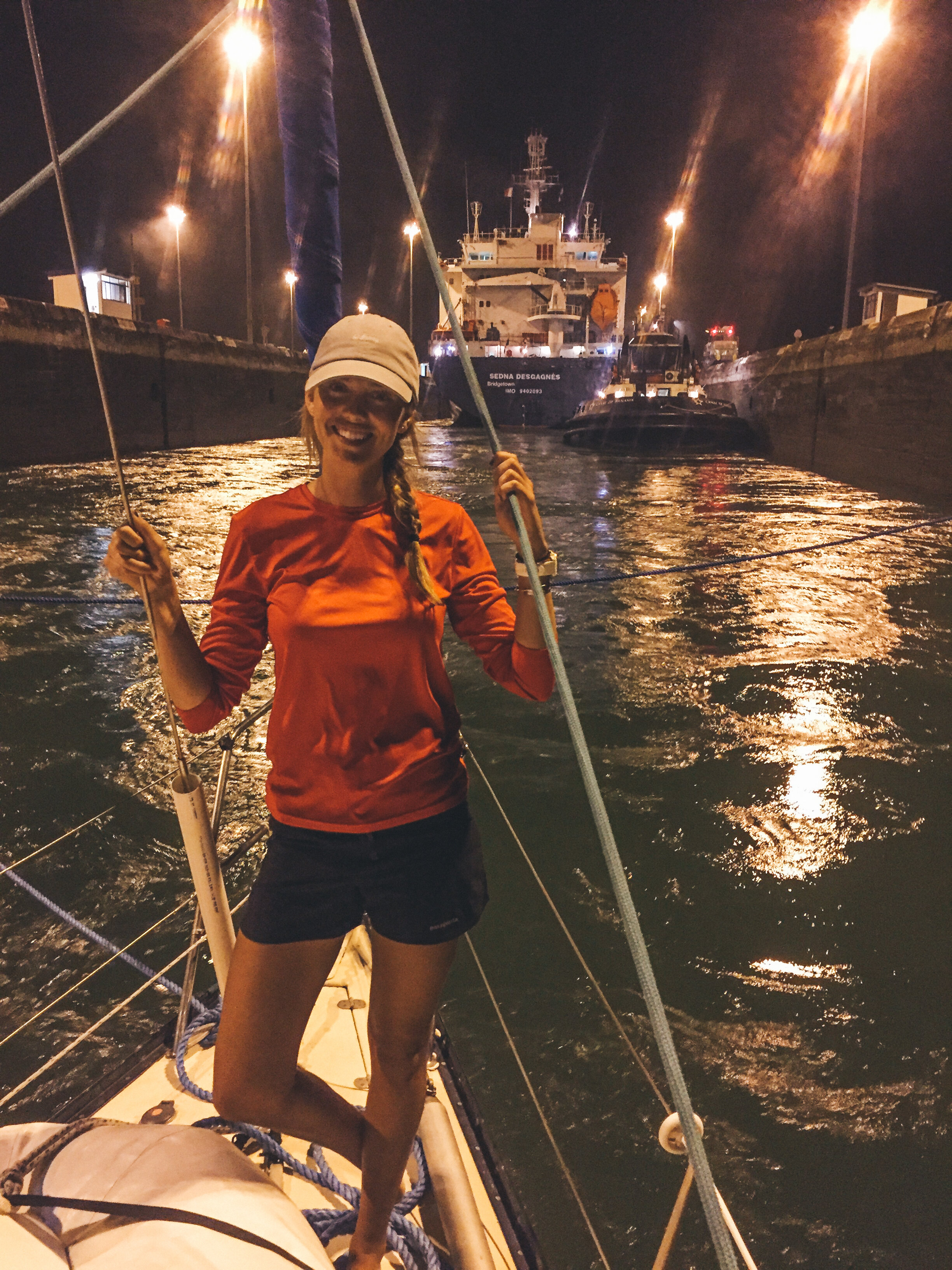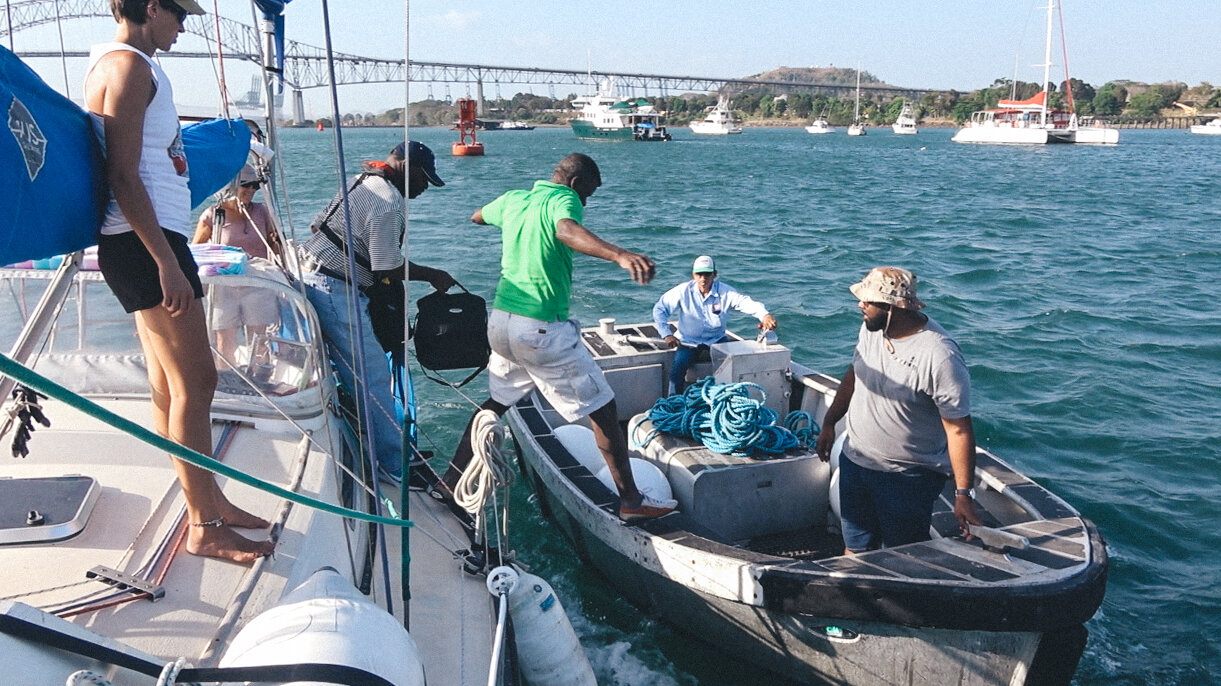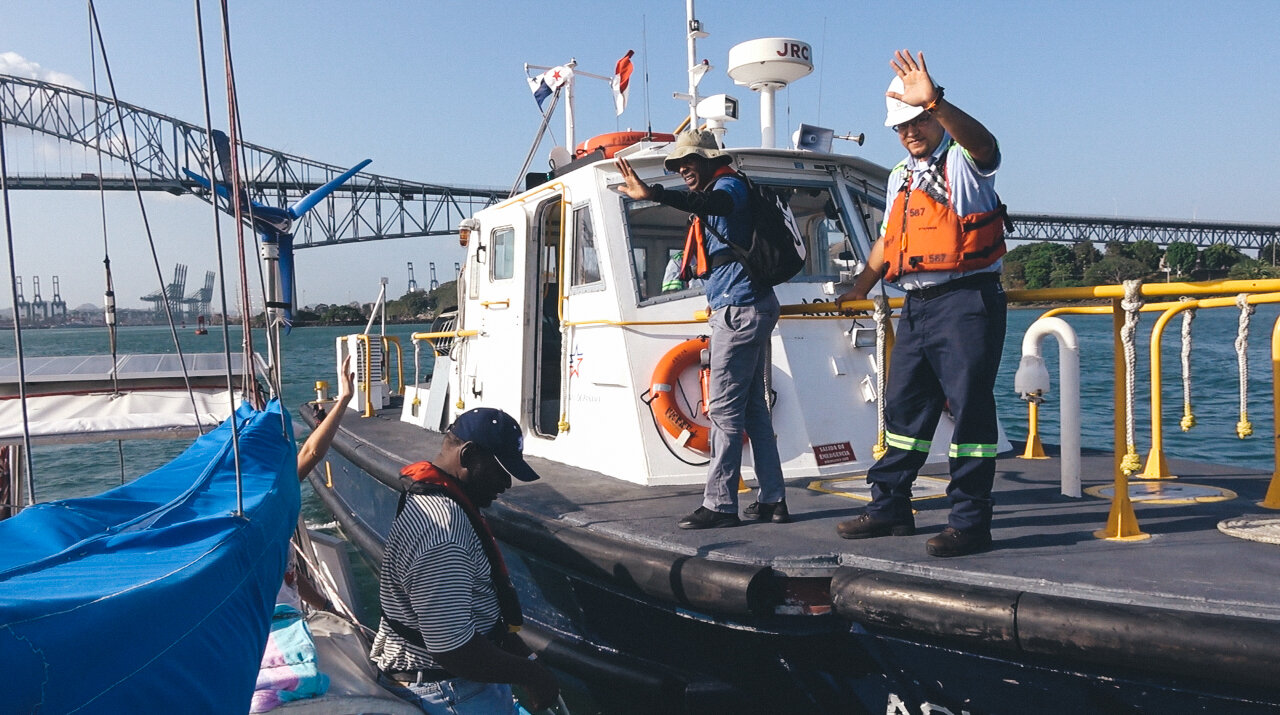Transiting the Panama Canal
The Panama Canal is undoubtably one of the great wonders of the world and one of man’s greatest achievements. We have all learned about it in school or have seen a History Channel special on it, but you cannot fully grasp it’s magnitude until you see it in person. The canal operates continuously, 24 hours a day, 365 days a year and this past year they had a total of 13,785 transits, everything from massive freighters to small sailing vessels like our own. This forty mile artificial waterway saves ships sailing between the east and west coasts a trip around Cape Horn, a journey of about 8,000 nautical miles. Traffic through the Panama Canal tends to be a barometer of world trade, rising in times of world economic prosperity and declining in times of recession, from a low of 807 transits in 1916, traffic rose to a high point of 15,523 transits in 1970. While the canal was under U.S. control, tolls for its use were set at rates calculated to cover the cost of maintenance and operation and not for profit, making the canal self-financing. The rates established back in 1914 remained virtually unchanged for 60 years, until 2016 when the Panamanian government made it a for profit operation. Large containerships using the new, larger set of locks today can pay upwards of a million dollars to transit.
While my parents were visiting, we took them to see the Mira Flores locks on the western side of Panama. Watching a missive ship pass through the locks made me realize just how much I wanted to have the experience of transiting the canal. Although we had no plans of taking Agape through the canal, I had heard that many cruising boats looked for help line handling as they transited, so I took to the Panama Cruiser’s facebook page and the forums looking for someone needing help. Seeing as we were so close to leaving for our big Pacific crossing, Josh was a bit stressed and didn’t feel the same desire to transit the canal as I did, so when a message popped up on the forum looking for two people to help out I immediately asked our friend and fellow cruiser, Becca, to see if she was up for the adventure. Sure enough she was and a few days later we were driving out to the Shelter Bay Marina near the east entrance of the canal.
Jacque’s route around the globe.
There we first met Jacque on her boat Shanti. Jacque is a 68 year old, single hander taking her boat on a three year circumnavigation. At the time, she was two years into her adventure and getting ready to make her last big ocean crossing back home to Australia. Up until this point she had made the journey on her own, but for her transit through the canal officials made it mandatory for her to have four line handlers onboard. Jacque had hired two professional line handlers and invited Becca and I onboard as her other two.
After a three hour drive across the country and making quick introductions, we soon learned that our transit had been delayed until the following day. She was kind enough to invite us to stay the night so we didn’t have to make the drive back and forth across the country again. The delay ended up being a much needed rest day for us all, as the stress of the upcoming transit had weighed heavily on Jacque and the looming Pacific crossing and long list of boat projects had taken it’s toll on Becca and I, so we took advantage of having a completely free afternoon to lounge by the pool, read a book, drink pina coladas and enjoy a nice meal together.
This woman is incredible, at the age of 68 she has more tenacity and determination than most people ever have in their youth. Her courage and passion is infectious and just talking with her will fill you with inspiration to chase after your own dreams.
That night Jacque told us we were the first people she’d ever invited to stay the night aboard Shanti since leaving. It felt like such a privilege to be able to share this experience with her and to help her complete this leg of the journey. We spent the night getting to know each other and hearing some of Jacque’s amazing stories. Since leaving Australia she’d had two major rigging failures while out to sea, and was almost demasted. She’d come close to running aground on a reef in a big blow, but was luckily saved with the help of some fellow cruisers, and had been entangled in fishing nets in the middle of the night in a heavily trafficked area in Indonesia. It seemed like she had countless stories of close calls and scary moments from over the years and her courage in facing them all was truly inspiring.
In the morning we met the two professional line handlers and set off for the first set of locks. Unfortunately, we were delayed yet again and Jacque had to drive circles in a narrow waiting area close to shore for what felt like hours. Just after dark we entered our first lock and waited for the men on the canal wall to throw down lines for us to secure the boats, but once again there seemed to be some confusion and they only had lines on one side for us. Soon the current in the lock started swirling and pushing us closer and closer to the wall. After much commotion and radio calls back and forth, the extra lines were thrown down just in time. Over the next twenty or so minutes the lock would fill with 26,700,000 gallons of water, water that is gravity fed down from Lake Gatún, the Chagres and other surrounding rivers.
The locks themselves are of uniform length (1,000 ft), width (110 ft), and depth (40 ft) and were built in pairs to allow for simultaneous transit of vessels in either direction. Each lock gate has two leaves, 65 feet wide and 6.5 feet thick, and set on hinges. The gates range in height from 46 to 82 feet and their movement is powered by electric motors recessed into the lock walls, and are operated from a control tower located on the wall that separates each pair of locks. It was unbelievable to think that these walls and this canal was built over 100 years ago!
Once we were level with the second lock, the massive doors slowly swung open and the line handlers on the wall walked the lines forward as we slowly motored into the next lock. On it went for the next few hours as we slowly transited the next two locks, finally arriving at lake Gatun where we’d moor for the night.
We were up with the sun and had a long way to motor to get to the next set of locks on the west coast, but because Shanti doesn’t motor very quickly, Jacque had kept the water tanks low and the fuel tanks filled with just enough fuel to get us across, hoping to keep the weight down in order to make the required 6 knot speed across the lake.
It was incredible to watch the sheer power and amount of water moving inside the lock!
Lake Gatun is known for having massive crocodiles, and although we didn’t spot any along our transit we saw tons of tropical birds and butterflies. As beautiful as the surrounding area is, it was quite stressful moving across the lake as massive freighters passed us by.
When we reached the Culebra Cut, also known as the Gaillard Cut, I was reminded of the cost of human life the making of this canal took. Here workers often laboured in temperatures of 100°F or higher, using rock drills, dynamite, and steam shovels to remove as much as 96 million cubic yards of earth and rock as they lowered the floor to within 40 feet of sea level. The unstable nature of the soil and rock in these hills made it one of the most difficult and challenging sections of the entire canal project. Many lives were lost in landslides and dynamite accidents during this phase of the project. By the completion of the canal over 26,000 lives were lost, mostly due to malaria and yellow fever.
It was like watching a massive city motor by.
The lake crossing was fairly uneventful and we entered the final set of locks with a massive containership behind us. The first lock went smoothly, but as we prepared to leave our second lock one of the line handlers up on the wall had gotten complacent and lowered the end of his line with a heavy monkey fist at the end. The monkey fist and line had some how got wrapped around a hook recessed back into the wall. He dropped the line thinking it would come loose but it looked like the line got even further tangled on the hook, and of course that line was the one I was in charge of handling! Everyone started getting anxious as we were being pulled closer and closer to the wall as it was time to start moving into our third lock and final lock. The current was ripping as gravity pulled the water down toward the sea and we couldn’t stop moving forward as the current pulled us along and the massive freighter behind us also began pulling ahead. We didn’t want to be run over by this massive ship, but letting my line go could have endangered us or the ship passing behind us, as the line could have got wrapped up in the props. Not to mention I think it would have resulted in a severe fine.
I held on for as long as I could, just until there was enough tension on the line to pull the monkey fist up and off the hook. It was a miracle that it came undone! I quickly pulled in the long line and awaited another to be thrown down as we got into position in the final lock. Our line handlers and agent said neither of them had ever seen or heard of anything like that happening in the canal before. The chances of getting a line wrapped around this hook that was recessed into the wall seemed like one in a million. Thankfully Jacque kept her cool and managed maneuvering the boat well in the strong current and kept us off the wall.
All of the drama we experience during our transit came from mistakes made by the canal’s employees and line handlers. We were super proud of ourselves for keeping our cool and making sure Shanti made it through safely. When the final locks opened up to the Pacific it was a tangibly heavy moment for us all, but especially for Jacque. She was on the home stretch! The vast Pacific lie ahead of her and she was free to continue her solo circumnavigation.
Soon after exiting the lock, our line handlers and agent were picked up and we continued on with Jacque to the anchorage where she’d stay for the night. Once the hook was set, we all took a deep breath, high-fived, hugged and celebrated with an ice cold drink. It was an adventure I’ll never forget and I’m so thankful to have shared this experience with these two amazing women!






